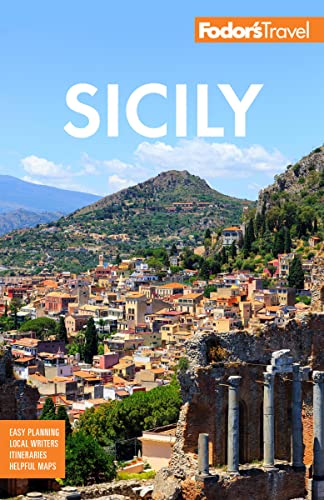The suggestive coastline of the Tyrrhenian Sea on Sicily's northern end is dotted with a mixture of pebble beaches and white sandy beaches interspersed by rocky cliffs, hidden coves, breathtaking scenery, rugged landscapes, and picturesque seaside towns, all easily reached by car, train, and bus yet relatively unexplored by tourists. The crystal clear waters of the deep azure sea show off stunning views of the nearby Aeolian Islands. Here, you can enjoy an authentic Sicilian experience without being bombarded by crowds and tourist traps.
The historic nature of Sicily means there is always something interesting to see on the coast or in the nearby mountain villages, which will take you back in time and offer you ancient castles, palaces, and stunning panoramas. There is a delicious array of Sicilian food and cuisine to taste throughout the year as well. Many foods are associated with traditional religious celebrations, such as days related to local patron saints. Each town's seasonal food festival will reward you with the highest quality seasonal products and diverse tastes from every area. These religious and food celebrations are unforgettable experiences rich in Sicilian history, culture and history.
The Tyrrhenian Sea, or Mar Tirreno to Italians, is the section of the Mediterranean Sea located off the western coast of mainland Italy. It was named after the Tyrrhenians, or Etruscan people, an ancient tribe who inhabited the west coast of the Italian peninsula from Tuscany down towards southern Italy from 900 to 27 BC.
This area has been inhabited since prehistoric times and has a very long history. Thirteen different colonizers have invaded Sicily throughout known history, all hungry to take advantage of its strategic position in the Mediterranean. Everyone from the Phoenicians, Greeks, Romans, Byzantines, Arabs, Normans, French, Germans, Spanish, Italians and even the British have tried to make the island theirs, and each civilization left behind imprints of their culture on the island. From Greek temples and Roman villas to Norman cathedrals and Baroque churches, Sicily offers a head-spinning array of historical sights to see.
And the Tyrrhenian Coast has always been at the forefront of this history. Ever since the Greeks colonized Naxos near Taormina over in eastern Sicily, the cities on this stretch of coastline have been a hub of activity, trade, and commerce. The export of agricultural products from the center of the island allowed the region to develop a series of historically significant villages, hamlets, and fortresses. The result is an intriguing part of Sicily filled with precious historical artifacts, from churches filled with art to well-preserved defensive castles and palaces.
Besides all this fascinating history, the coastline also offers up rustic, off-the-beaten-track locations to explore, such as sleepy fishing villages and bustling seaside resort towns filled with a buzzing energy.
The compact geographic lay-out of the region means you can enjoy the richness of the coast, including the stunning beaches and the best seafood you will ever taste, along with the evocative beauty of its interior and its mountains dotted with intriguing villages to explore, often all on the same day. Enjoy a morning swim at the beach and take a short drive into the picturesque mountains, have a hearty lunch in a small family-run trattoria, and be back at the beach in time to see the sunset.




